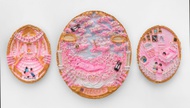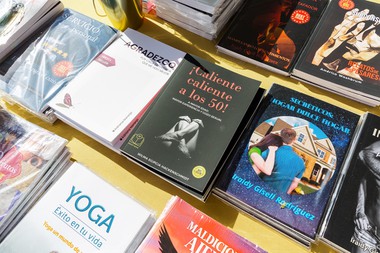
Avenue of Mysteries By John Irving, $28.
The Avenue of Mysteries that John Irving chose for the title of his latest novel runs through Mexico City, and its principal landmark is the Basilica de Nuestra Señora de Guadalupe. Legend holds that Our Lady of Guadalupe, the patron saint of Mexico, appeared to a man named Juan Diego in 1531, although Irving’s Juan Diego holds that she was an indigenous spirit hijacked by Roman Catholicism.
Actually, this opinion came to Juan Diego via his sister Lupe, who reads minds, knows peoples’ pasts and predicts some parts of the future. The siblings, at least when we first encounter them, live in a shack at the garbage dump outside Oaxaca, where 14-year-old Juan Diego rescues books and teaches himself to read Spanish and English—hence “dump reader” is his epithet—and Lupe, a year younger, spouts incomprehensible gibberish only her brother can translate. “The Virgin Mary was an imposter, in the crazy child’s opinion; the Virgin of Guadalupe had been the real deal, but those crafty Jesuits had stolen her for their Catholic agenda,” Irving writes.
The Jesuits running the orphanage to which the siblings eventually repair are more kindly than crafty, though. New among them is a young man from Iowa named Edward Bonshaw, descendant of a Scot who converted to Catholicism while playing mahjongg with a nun on the ship carrying him to colonial America. He will fall for a transvestite named Flor, and Juan Diego will wind up in Iowa City.
This is classic Irving, whose thoroughfares of mystery often T-junction at Quirky Lane. The author of The World According to Garp, The Cider House Rules and A Prayer for Owen Meany has frequently examined life and love, as well as events of his own life. And at age 73, he’s taking on elemental issues of memory, narrative and faith. Juan Diego, once priestly interpreter of his sister’s vivid pronouncements, 40 years later relives those days in dreams. A novelist, he flies to the Philippines to honor a memory, accompanied by an apparently imaginary mother and daughter, possibly Guadalupe stand-ins.
Irving quotes the novelist Juan Diego as observing, “Real life is too sloppy a model for good fiction.” The omniscient narrator occasionally seems uncertain about characters’ motives. This offhand touch, along with the peculiar circumstances—Juan Diego and Lupe join a circus, too—helps lighten a sometimes dark story.
Find more by Chuck Twardy at chucktwardy.com.







